Carleton Athletics: Women's Swimming and Diving: Socha Wins 100 Free at Jane Freeman Invite
Kurt Kohlstedt '02: Larger Than Life: 10 Monuments Honoring Nelson Mandela

Though Nelson Mandela’s passing will spur the creation of memorials worldwide, a number of larger-than-life tributes are already extant or planned.
Nelson Mandela Capture Monument
 (images via: Lemay Online)
(images via: Lemay Online)
The Nelson Mandela Sculpture in Howick KwaZulu-Natal was inaugurated and unveiled by South African President Jacob Zuma on August 4th, 2012. Artist Marco Cianfanelli was commissioned to create the sculpture in time for the 50th anniversary of Mandela’s capture by police in 1962, after which he was imprisoned for 27 years.
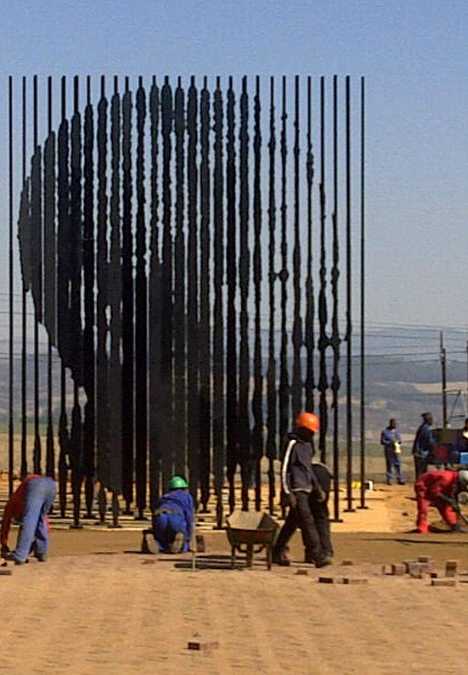 (image via: Lemay Online)
(image via: Lemay Online)
The sculpture comprises 50 metal columns ranging in height from 5 to 10 meters (16 to 33 ft). Visitors can only discern the portrait of Mandela at a point 35 meters (115 ft) away from the front of the sculpture, signifying the fact that Mandela, dubbed “The Black Pimpernel”, was able to elude authorities for 17 months after his arrest was ordered.
Boxing Mandela Statue
 (images via: National Geographic and Howzit MSN News)
(images via: National Geographic and Howzit MSN News)
In June of 2013, a strikingly styled statue of Nelson Mandela was unveiled and unlike other Mandela statues on display around the world, this one depicts the famed freedom fighter as, well, a different sort of fighter. Situated in front of the Magistrate’s Courts in Johannesburg, the 5 meter (16.5 ft) tall steel statue by Marco Cianfanelli depicts Mandela in his younger days when he was known mainly for his skills in the boxing ring.
Nelson Mandela Park Public School, Toronto
 (image via: Edwards13)
(image via: Edwards13)
Built in 1917, Toronto’s Park Public School underwent a multimillion dollar renovation that included the school’s name being changed to Nelson Mandela Park Public School. Much of the structure’s imposing architectural elements and Beaux Arts detailing both inside and out were retained in the renovation while students learn the reasons why their school, located so far from South Africa, was named for someone whose fame knows no national boundaries.
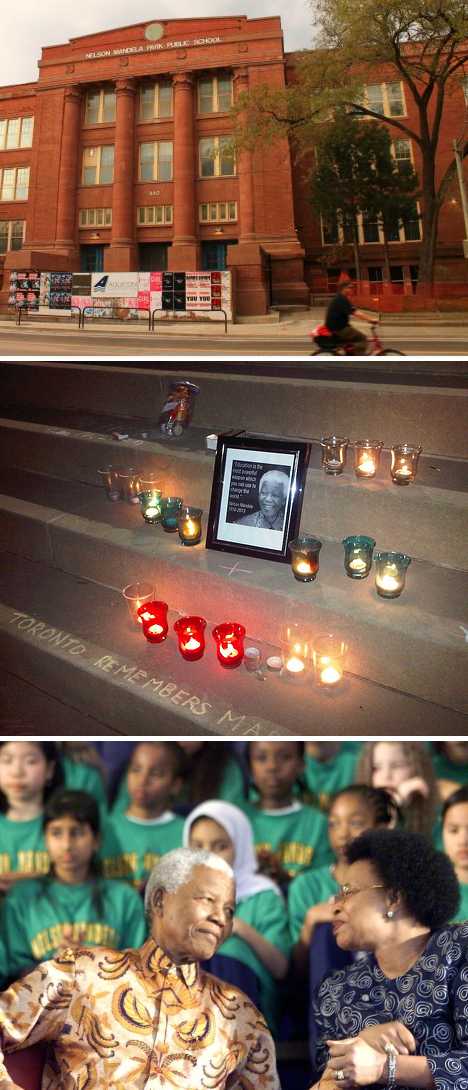 (images via: Toronto Star, HiMY SYeD and CBC.ca)
(images via: Toronto Star, HiMY SYeD and CBC.ca)
Located in in downtown Toronto’s Regent Park neighborhood, the school’s official renaming ceremony on November 17th of 2001 was attended by none other than Nelson Mandela himself. Mandela took time out from his third trip to Canada (during which he accepted honorable Canadian citizenship) to visit the school named for him and spend time with some of the students.
Mandela & Biko Mural
 (image via: Hot 106.5FM)
(image via: Hot 106.5FM)
The epithet “man of the people” suits the late Nelson Mandela more than most who’ve been casually dubbed as such, and his accomplishments are perhaps greatest treasured by the lowest levels of South African society. Here in one of Cape Town’s rougher neighborhoods, a well-worn mural depicts anti-apartheid freedom fighter Steve Biko alongside a younger Mandela.
Next Page - Click Below to Read More:
Larger Than Life 10 Monuments Honoring Nelson Mandela





[ By Steve in Global& Travel & Places. ]
[ WebUrbanist | Archives | Galleries | Privacy | TOS ]
Thomas Glessner Weaver '69: Andrew Cameron Macrorie from Ayrshire and his family tree legacy in the Heartland - Midwest of the US of A
Cheryl Klein: On Being a Real ________
And then I thought: Dammit, I'm out here running in 35 degree weather too. Am I imaginary? No! I'm a real runner as well!
And this got me thinking about the way we use the word "real" to connote -- what? Physical existence? Identity? Membership in a group? People talk a lot about whether or not they're "real" writers if they haven't been published, or if they don't do it every day, or if they're not writing a specific thing (books = good, blog posts = your existence is doubtful). Fandoms are riven by arguments about whether you can be a "real" fan if you haven't read all the back issues, if you only got into it after the movie, even (noxiously) if you are female. When I saw that guy in the park, I doubted my worth as a runner because I don't have the physical ability to run in shorts at 35 degrees without getting frostbite -- meaning, really, I haven't put in the time to gain that muscle tone and metabolism. But my legs pumping in their tights, my heart pounding in my chest, my hand clutching my water bottle were all as present and powerful as that young man dashing by; and I resolved then and there that I will stop dissing myself about this in future and give myself credit -- that my effort, at the least, was real and deserved respect.
Of course, since I live in children's books, I also thought of this:
"What is REAL?" asked the Rabbit one day, when they were lying side by side near the nursery fender, before Nana came to tidy the room. "Does it mean having things that buzz inside you and a stick-out handle?"
"Real isn't how you are made," said the Skin Horse. "It's a thing that happens to you. When a child loves you for a long, long time, not just to play with, but REALLY loves you, then you become Real."
"Does it hurt?" asked the Rabbit.
"Sometimes," said the Skin Horse, for he was always truthful. "When you are Real you don't mind being hurt."
"Does it happen all at once, like being wound up," he asked, "or bit by bit?"
"It doesn't happen all at once," said the Skin Horse. "You become. It takes a long time. That's why it doesn't happen often to people who break easily, or have sharp edges, or who have to be carefully kept. Generally, by the time you are Real, most of your hair has been loved off, and your eyes drop out and you get loose in the joints and very shabby. But these things don't matter at all, because once you are Real you can't be ugly, except to people who don't understand."
"I suppose you are real?" said the Rabbit. And then he wished he had not said it, for he thought the Skin Horse might be sensitive. But the Skin Horse only smiled.
"The Boy's Uncle made me Real," he said. "That was a great many years ago; but once you are Real you can't become unreal again. It lasts for always."
(I should add that I don't think what I'm saying holds entirely true for racial/ethnic/sexuality group identities, which have complexities and histories, and costs and benefits, far beyond mere participation in an activity or fandom. Nor is it true for anything that requires a specific accomplishment.... No matter how much I may love cheering at marathons, I can't say I'm a Real marathoner, because I haven't done one! But for activities and fandoms, this is my new standard for Real.)
And if you have all of those qualifications, and then some people tell you you aren't a Real __________, then they are the actual frauds; because part of love is generosity, the desire to see this good thing grow, and they don't have enough love in them to be a Real ________ themselves. Ignore them and go on.
By this measure, I am a Real runner, knitter, cook, yogi, writer, and editor. I do remain objectively not very good at the running, knitting, and yoga. But there is something about merely being Real that makes me feel better connected and more committed to my chosen activities--that I know I belong to them and they to me, that no one can take my Realness away from me. As Beyonce gave way to Bonnie Tyler and the sun set over the lake, the wind died down. My speed picked up. I felt again the exhilaration I discovered years ago, that I can run, that I am a runner, that this is a superpower I carry in my own two feet. And I ran out of the park, as Real as I wanted to be.
Kurt Kohlstedt '02: Shadowy Secrets: Colorful Layering Creates Trick 3D Murals

Worthy of a double-take twice over, these convincing wall artworks reveal imaginary depths and amazing arrays of color … all seemingly hidden behind dull peeling paint and inside innocuously crumbling facades.



While he does not say much about himself, 1010 is both a gallery and street artist in Germany with a passion for surreal figures, geometric illusions and other visual trickery.

While the shapes are simple the shadows are incredibly complex, each layer built up with layers of color and light.
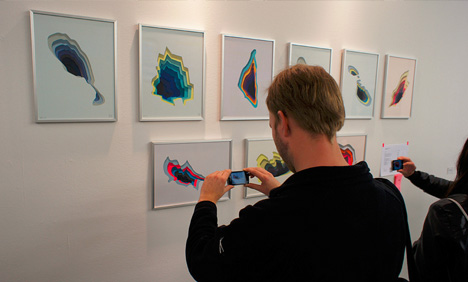

This particular series of optical illusion ‘holes’ spans both sides of his portfolio – smaller-scale works are framed and hung in galleries while larger-scale installations are set in rough exterior urban landscapes.
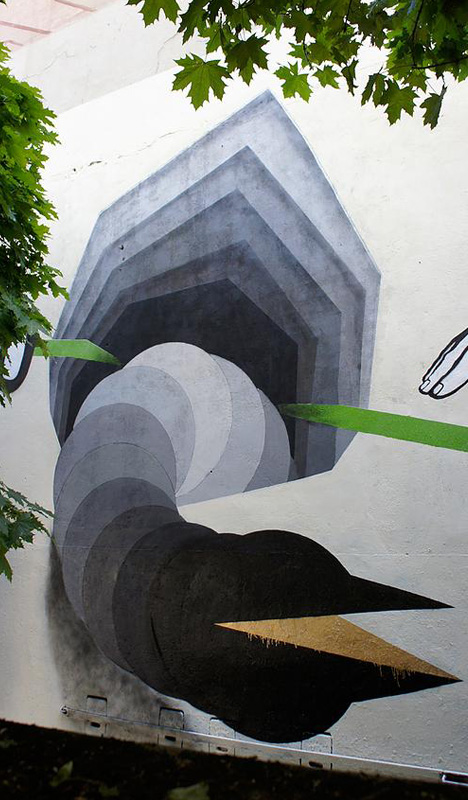
His other pieces that include characters like birds and snakes are of a similarly simplified style, but their cartoonish nature masks careful color and tone selection as well as time-consuming implementation.





[ By WebUrbanist in Art& Street Art & Graffiti. ]
[ WebUrbanist | Archives | Galleries | Privacy | TOS ]
Kevin Draper '10: Your Annotated Smartphone Bathroom Reader for Sunday, December 8th, 2013.

A few NBA players made the reader this week, though not Gilbert Arenas, whose toilet paper is featured above. Too bad he took his blog down. Otherwise he might’ve had a chance.
Too Many Aussies Not Enough
Andrew Bogut
Sportal
I wanted to include this little example of burgeoning nationalism in the NBA from Andrew Bogut, the starting center for the Golden State Warriors, who feels that there’s room for more Australians in the best league in the world. Bogut makes interesting points about international player distribution in the NBA, pointing out that the current leaders, Brazil and Spain, have only six players apiece, and that Australia isn’t terribly far away with four already in, and others (such as top prospect Dante Exum) on the way via the draft. “If we can get a few more guys in the NBA in the coming years we can push for becoming the second biggest country in terms of contribution of players. That would be a fantastic achievement for a small country like Australia,” writes Bogut. This is an interesting read from the defensive stalwart, who shows off his sharp intellect, and quasi-knowledge of American sport-related figures of speech. ”We are definitely batting above our weight,” writes Bogut; a phrase that sounds awesome, but sadly means nothing here in the States. Perhaps it’s a cricket reference?
Giannis Blogging All The Way From Greece
Giannis Antetokounmpo (trans. Thodoris Galanos)
Brew Hoop
And now for something similar, yet different: a blog entry from rookie forward Giannis Antetokounmpo of the Milwaukee Bucks. Antetoknounmpo writes about subjects one would expect from a new player in the NBA, as well as the United States. Antetkounmpo breathlessly describes his experiences playing against LeBron James and Kevin Durant, gushing over their work ethics and skill sets. But he also offers some refreshingly unfiltered opinions about the NBA that are rarely seen from the highly manicured American players. Antetokounmpo draws attention towards “recognizable players” who are notable due to their “high bank accounts,” but he admires that they do not “rest on their glory.” He also shares some thoughts about missing family and friends at home, and where he’s enjoyed visiting since he entered the league (Miami and Chicago). It’s all very interesting stuff from a young player who seems to be enjoying his new surroundings and job. As Giannis suggests: “be well and watch the Bucks!” I will certainly be well, and I thank Giannis for his well wishes, but not even he could make me watch the Bucks.
Philadelphia’s Victory Lab
Tom Sunnergren
TrueHoop
I enjoyed this piece from Tom Sunnergren, who provided us with a look at the 76ers who are “mastering the science of winning basketball games.” Sunnergren writes that the Sixers are among a select vanguard pioneering “a new era of player evaluation” through extensive use of technology that tracks player movement, and seeks to create healthy, efficient professionals who can help teams win. Sure enough, the devil is in the details when it comes to the Sixers. Sunnergren shows us the ways the Sixers have departed from the mantras set forth by former ideologue Doug Collins. Once a slow team that took midrange shots (and make them; a move Sunnergren writes “deepened a self-inflicted wound”), the Sixers now lead the league in pace, and take the 12th most three pointers in the league. I have really enjoyed pieces that show how NBA teams attempt to change their own institutional memories. It’s fascinating that many of those purges begin with ego-driven coaches (like Collins in Philly, but also Lionel Hollins in Memphis and George Karl in Denver) who have a particular style towards team building and on-court management. Philadelphia is trying to change this. Nice work from Sunnergren and TrueHoop.
Royce White: “Basketball is in Flux,” but Ex-ISU Star Optimistic about Pro Return
Randy Peterson
Des Moines Register
I wanted to direct a little attention to this small article in the Des Moines Register by Randy Peterson which features a few thoughts from Royce White, who is still attempting to get his playing career started as he manages his well-documented anxiety disorder. We learn that White is still actively working to find a team to play with, but basketball is a bit “in flux” at the moment. What exactly this means isn’t clear, but it’s apparent that White isn’t terribly concerned. “It’s something that happens to a lot of guys in their early careers,” said Peterson quotes White as saying. “For me, it’s can we find a team that has the right setup, has an open mind, wants to understand what I’m saying, and other things that we’ve discovered since I’ve been in the league.” This article is really great; clear facts, fair quoting, and a little bit of essential information. I still hope Royce can find his way to the NBA sooner rather than later.
Nuggets: 98, The Knicks: Unnamable
Robert Silverman
Knickerblogger
I will be honest: I generally avoid team-specific blogs. I’m a Warriors guy, and aside from what I do for The Diss, I sort of have a hard time keeping up with your team’s subtleties. Additionally, I don’t really read recaps. God, I hate recaps. They’re disjointed and unorganized; pretty lazy forms of analysis. But that changed on November 30, 2013, when I found this piece on Twitter. Now, I hadn’t watched the game. I don’t really watch the Knicks; usually I’m at work when their games are on, and I haven’t been particularly drawn to their decline (I favor the Nets’ Hindenburg-esque disaster). But this has changed. I so very much enjoyed this piece. Silverman’s lament is chilling and foreboding; complete with gallows humor and throat-gulping moments upon which almost every fan of sport can relate. I read and re-read this piece, going back to 2009 when my 48-win Warriors devolved into a 26-win outfit again. Hadn’t I just lived through this shit? It wasn’t fair. It was much like what Silverman writes here. Indeed, he is right, for in these moments “we know, deep down in the dark places we don’t talk about at cocktail parties, that this cannot be fixed.” Unsurprisingly, I’ve started reading Knickerblogger’s recaps every single night. You should too.
Kelly O'Brien '12: Photo

Kevin Draper '10: Games of the Week: December 9-15, 2013.
Rest in peace, Nelson Mandela.
Monday: Golden State Warriors at Charlotte Bobcats (4:00 PM PST on League Pass)
We’re getting the Homer Game out of the way early this week; an afternoon slugfest between my beloved Golden State Warriors and the Charlotte Bobcats. Of course, nothing is guaranteed in this contest, and the Bobs have a good shot of winning this game. The Dubs are on the road (and have been for most of December) the Bobs are playing some pretty great defense this year, and have held their last 13 opponents under 100 points. Pretty good stuff for Steve Clifford’s young team. But unfortunately for them, the Warriors have been on something of a tear lately. They’ve averaged 50% shooting, as well as about 111 points a game, in their last three wins. And Steph seems to enjoy coming home to Charlotte, where he spent his childhood and college years. In two games in Charlotte last season, in front of friends and family, Steph had 27 points in both games, and shot 12-20 from three. So this will be a test for the Bobs. Which I hope they fail in spectacular fashion. No offense, Bobs. Just don’t want y’all beating my team.
Tuesday: Miami Heat at Indiana Pacers (4:00 PM PST on League Pass)

You know why we’re watching, and I know why we’re watching, so I won’t beat around the bush. I will just say that I’m already making some excuses for the 18-3 Pacers should they lose this early season showdown against their conference rivals. The Pacers are currently slogging through a rough patch of their schedule; they lost to the Blazers, beat the Spurs, lost to the Thunder, and now look forward to a date with the team that has eliminated them from the postseason the previous two years. The Heat, meanwhile, are dealing with narratives that seem to focus on stagnation, instability and injury, even though they’ve won 12 of 14 games, and seem to be about as dominant as they’ve always been. But all of that’s just white noise, you know? We’re here for LeBron versus Paul George, and we will not be leaving disappointed.
Wednesday: LA Clippers at Boston Celtics (4:00 PM PST on League Pass)
The draw of this game, of course, is the return of current Clippers coach Doc Rivers to the Boston Celtics, a team that he coached for nearly a decade, took to all sorts of playoff series, qualified for two finals, won one championship, and made a random Swahili word sound really chic. But I’m actually watching for the strangely intriguing 10-12 Celtics, who are taking their turn leading the Atlantic Division with a crappy record, but playing with a youthful abandon that’s hard not to love, and becomes contagious the more you watch. Though I haven’t watched much Boston basketball this year, Brad Stevens has kept the enthusiasm alive with the Celtics, who continue to play with a pride that Doc Rivers took advantage of, and left intact for the new team to use. Jordan Crawford and Jeff Green have been delicious bowls of Froot Loops this NBA season. Crawford’s playing the point; dribbling the ball like he’s a T-Rex with semi-decent court vision and a mission to take any shot possible. Jeff Green plays like the “good son” version of Antoine Walker; stretching the floor and getting to the hole with great excitement (and streakiness). Clearly we are at the beginning of the journey in Boston, but a win against their old coach and ideologue would be a huge step for Coach Stevens and his precocious bunch.
Thursday: Houston Rockets at Portland Trailblazers (7:30 PM PST on TNT)

I’m not a huge fan of the Rockets — their two star players, both prone to ball-watching and their own brand of lock-and-step isolation plays, have damaged their relative watchability — but the only other option that night is LA Clippers versus Brooklyn. Now, I love watching the Nets smolder; burning like a dirigible caught in electric wires, but I feel like I should pace myself, since the best is yet to come in that danse macabre. So here I am, stuck with this boring-ass matchup between two of the West’s elite. Hooooo hum. I guess I should lighten up, right? Common wisdom seems to imply that these teams will match up very well against each other. No one’s been quite able to figure out how to guard LaMarcus Aldridge, who can vacillate between Dirk Nowitzki and Tim Duncan with sickening ease these days. Maybe Dwight will be the guy to crack the LMA code.
Friday: Sacramento Kings at Phoenix Suns (7:30 PM PST on League Pass)
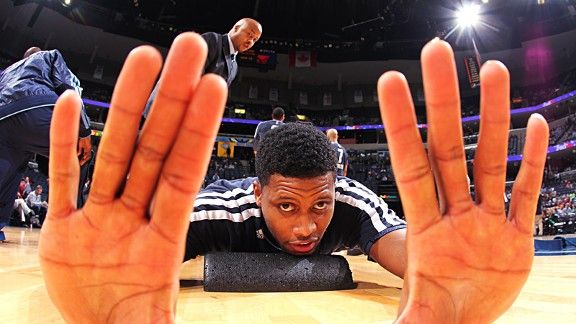
I’m waiting until Friday to catch a glimpse of the brand new Sacramento Kings, who for some reason have volunteered to be the newest home for Rudy Gay, the former Toronto Raptor who was traded (alongside Quincy Acy and Aaron Gray) for John Salmons, Greivis Vasquez and Patrick Patterson. I can’t say I understand exactly what the Kings are doing; Gay still has a year and $20 million left on his contract, he’s playing about as inefficiently as he always has, and no one’s quite sure whether he’ll be able to co-exist with Kings wild-eyed, pouty-faced franchise center Boogie Cousins. But Rudy looks really good in purple, and he’ll look killer in those black unis they wear sometime. And less Greivis Vasquez means more Isaiah Thomas, who’s been having a killer season (and won’t win Sixth Man anyways, since he’s not winning). So I’m willing to call it a good trade.
Saturday: LA Lakers at Charlotte Bobcats (4:00 PM PST on League Pass)

On Sunday night, after eight long months, the world was treated to their first glimpse of post-Achilles rehab Kobe Bryant. And despite a massive hype campaign which spanned for months on end, Kobe looked pretty much like a guy who hasn’t played a sport professionally in nearly eight months. The speed wasn’t there; he wasn’t able to get in front of anyone, and had a number of his shot attempts contested or blocked by lesser players on the Raptors. But his distribution game was on point, and he was able to gather eight rebounds. So who knows? He’s got the Suns and the Thunder this week, and this will be the second night of a road back to back. As far as we know, Kobe might not even play. I’ll be interested to see what happens either way.
Sunday: Orlando Magic at Oklahoma City Thunder (4:00 PM PST on League Pass)

Victor Oladipo’s transformation into an NBA point guard is one of the more exciting storylines of this season, and you better believe that it’s getting more and more exciting as the season goes on. Though Oladipo never played point guard in college (he was a standout player at Indiana University), he is picking up the nuances of the position rather quickly. He had a 26-10-10 triple double last week (against equally exciting rookie point guard Michael Carter-Williams), and has cut down on his turnover numbers drastically over the last ten games. In fact, his numbers through the first part of the season are eerily similar to Russell Westbrook’s rookie numbers, who, of course, serves as something of a prototype for Victor Oladipo as another freakish guard-sized athlete who learned the point guard position as a professional. So we’ll see the pupil take on the master in this Sunday affair. More than just the Oladipo-Westbrook matchup, the Magic are a team that are trying to build themselves in a manner similar to the Thunder. This game will produce some strange mirror images that we, as fans, will have a chance to enjoy unfettered.
Ken Wedding's CompGov Blog: Testing the patience of Mexican voters
After president's first year, Mexico still a mess by many measures
To President Enrique Peña Nieto's supporters, his first year in office has been a time of bold promises kept as he pursues an ambitious agenda of reforms designed, in the long term, to bring peace and economic growth to Mexico…Though he promised to focus on Mexico's economic potential, Peña Nieto has presided over an economy that has hardly grown at all. Though he vowed to reduce the kind of violence that affects innocent citizens, his record has been mixed, with kidnappings and extortion rising nationwide even as the number of homicides drops…
Peña Nieto
As Peña Nieto marks his first year in office, he has successfully pushed major banking, education, tax and telecommunication reform bills through Congress, and is pursuing changes in the crucial oil industry. Yet the young, confident and telegenic president, who as a candidate promised a "government that delivers," is facing doubts about his ability to do just that.
A poll from El Universal newspaper last month put Peña Nieto's approval at 50% and his disapproval at 37% — his worst numbers so far as president…
It may be a challenge, however, to convince Mexicans that a radical transformation is truly underway. This is a country with a history of passing beautifully constructed laws that often end up doing little to change the real-life status quo. Some critics argue that Peña Nieto and his allies have allowed key elements of their reform package to be watered down and made less effective as they compromised, trying to mollify often raucous special interest groups and opposition political parties who had agreed to a general reform framework in a so-called Pact for Mexico, signed just after Peña Nieto's inauguration…
Peña Nieto has yet to push through the most controversial change of all: a plan to open the bloated and inefficient state oil monopoly, Pemex, to foreign investment. The company supplies a third of the federal government's income, but production is dwindling precipitously, and analysts say Pemex requires injections of foreign expertise and technology to turn itself around. But the constitution mandates that oil is the property of the Mexican people, and the issue touches deep chords of national pride…
On the crime front, federal figures show that homicides for the first 10 months of 2013 were down 16% compared with the same period in 2012, but extortion was up 10% and kidnappings up 33%. Such numbers come with multiple caveats: Prominent critics have charged that the government is manipulating the homicide statistics, while the extortion and kidnapping figures could reflect an increase in the reporting of crimes to authorities…
Teaching Comparative blog entries are indexed.
The Second Edition ofWhat You Need to Know: Teaching Toolsis now available from the publisher
The Fifth Edition ofWhat You Need to Knowis also available from the publisher.
Alison Sommer '05: Panic Attacks and Anxiety Disorders - My TEDx Talk
Kurt Kohlstedt '02: Bizarre Burial Boxes: 20 of the World’s Weirdest Coffins

Our modern culture has made the physical process of burial little more than an afterthought, leaving us to numbly choose from a small assortment of wooden boxes in a showroom or catalog in the aftermath of a loved one’s death. But some casket designers literally think outside the box with colorful, celebratory or just plain bizarre creations ranging from coffins shaped like beer bottles and cars to those equipped with warning signals in case you’re buried alive.
6 Amazingly Weird Coffins by Kane Kwei Carpentry in Ghana
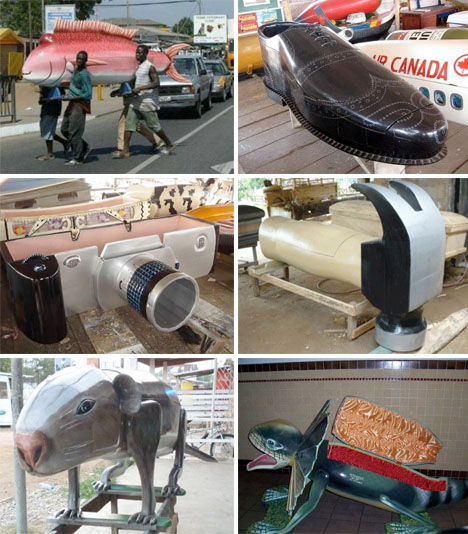
In Ghana, the Ga tradition of carpentry includes a fun and colorful array of fantasy coffins unlike anything you’ll see anywhere else in the world. Drawing from local culture and the personalities of those for whom the individual coffins are commissioned, the designs flout worldwide customs of somber funerals. The first one, a pink fish, was made for a fisherman from Accra in the 1950s, and from there the trend took off. Some might represent careers, others vices – you could be buried in a bottle of beer, for example.
Star-Trek Themed Casket


If you’re enough of a Star Trek fan to learn how to speak Klingon, perhaps you’re enough of a fan to be buried in this Star Trek-themed casket inspired by the ‘Photon Torpedo’ design seen in Star Trek II: The Wrath of Khan. Or, if you’re partial to cremation, there’s always the Star Trek urn.
Coffins with Bells and Whistles – For Indicating That You’re Not Dead


In the centuries before modern medicine made a pronunciation of death much more reliable, people had justifiable fears of being buried alive (which got even worse after Edgar Allan Poe’s ‘The Premature Burial.’) Hence the many designs for ‘safety coffins,’ which literally included bells and whistles so if you happened to wake up in the midst of your own burial, you had a chance of getting out alive. Some have handles or strings that can be pulled to activate a signal, while others were mouth-operated. One terrifying spring-loaded ejector coffin will launch you out of the ground (to the heart-stopping terror of anyone who happens to be nearby.) Some cemeteries, like the Williamsport Wildwood, even have escape hatches on the vaults.
Cruisin’ Caskets

Take a stylish ride to your eternal resting place in a ‘Cruisin Casket,’ a car-shaped coffin with functioning wheels that can actually roll down the street. This company will make a custom casket shaped like any model car. It seems like a shame to bury something like this, but if you want to enjoy it for a while before you croak, you can get a cooler insert and use it to keep your drinks on ice.
Next Page - Click Below to Read More:
Bizarre Burial 20 Of The Worlds Weirdest Coffins





[ By Steph in Art& Sculpture & Craft. ]
[ WebUrbanist | Archives | Galleries | Privacy | TOS ]
Kurt Kohlstedt '02: Apostrophe-Shaped Bridge Doubles as a Ride for Pedestrians

Shaped like an apostrophe and bearing a shark-inspired fin, the Scale Lane Bridge in Hull, England allows pedestrians to go along for the ride when it swings open to allow ships passage. Made of black steel in a curving form, it resembles a ship when tucked up against the riverbank and viewed from afar.

The Scale Lane Bridge is believed to be the world’s first functioning bridge that enables pedestrians to stay on it while it opens and closes. Spanning the River Hull, the bridge cantilevers 35 meters (about 115 feet) to the east from its perch on the west bank.


The bridge provides a walkable route from a new public square and the Museums Quarter on the west bank to ‘The Deep,’ an aquarium that’s one of East Yorkshire’s biggest attractions. The spine of the bridge allows enough room for smaller boats to pass beneath it.

A viewing deck and seamless steel balustrade makes pedestrians feel like they’re on board a docked ocean liner, and offers a variety of seating areas. When the bridge opens, it activates a sequence of rhythmic bells combined with pulsing light to alert pedestrians to the imminent rotation and make the ride more exciting.





[ By Steph in Architecture& Public & Institutional. ]
[ WebUrbanist | Archives | Galleries | Privacy | TOS ]
Carleton Athletics: Men's Basketball: Knights Top Minnesota-Morris for Second Consecutive Win
Carleton Athletics: Women's Basketball: Knights’ Long-Range Accuracy Shoots Down St. Kate’s
Ken Wedding's CompGov Blog: Behind the scenes
Nigeria's Akinwumi Adesina named Forbes African of the Year
Nigerian Agriculture Minister Akinwumi Adesina has been named Forbes African of the Year for his reforms to the country's farming sector."He is a man on a mission to help Africa feed itself," said Forbes Africa editor Chris Bishop.
Akinwumi Adesina
Analysts say Nigeria's economy has long been dominated by oil, while agriculture has been ignored, even though it supports far more people.
Mr Adesina said he wanted to help people become rich through farming...
Aliyu Tanko from BBC Hausa says Mr Adesina has introduced more transparency into the supply and distribution of fertiliser, which had previously been marred by massive corruption…
In January, Mr Adesina announced a scheme to hand out 10 million mobile phones to farmers to "drive an agriculture revolution" so they can find out the latest market information.
However, our correspondent says this goal has not yet been achieved, noting there is no mobile network coverage in many rural areas…
Mr Adesina was chosen ahead of some of Africa's most prominent businesspeople: Aliko Dangote and Jim Ovia, also from Nigeria; South Africa's Patrice Motsepe; and Zimbabwe's Strive Masiyiwa…
Teaching Comparative blog entries are indexed.
The Second Edition ofWhat You Need to Know: Teaching Toolsis now available from the publisher
The Fifth Edition ofWhat You Need to Knowis also available from the publisher.
Alicia Hutchison Steffann '94: Guest Napper #190: Lackadaisical Lactation
John Tischer '71: San Francisco Update
just had the best Indian food I've tasted in years,
and as always, am completely blown away by the
Kevin Draper '10: Who the Fuck is Akeem Scott?
Editors’ Note:This is a guest post from Seth Johnston. Seth is a wily veteran of the basket-blog-o-sphere. This is Seth’s second contribution to The Diss. Follow him on Twitter here.
***
“If I don’t make it, after all this, I can at least sit back someday and tell my kids I tried.”
Akeem Scott does not have kids yet. But he does have an NBA dream, which he’s telling me about as we wait in line at a Blimpie’s in Boise Idaho. There is much to discuss; his has been a long, hard journey that included six years of shuffling between pro-teams abroad; a grind that came after being an overlooked high school prospect on a junior college team. Then there is his present, in which he is a thirty year-old point guard playing for the Bakersfield Jam of the NBA D-League at a pivotal moment of his career. He turned down the most lucrative offer he has ever received for this opportunity. Finally, there is his future, which may or may not include the realization of his dream. One thing that is certain is that his yet to be born children will have one hell of a role model for going all in on big dreams.
It is all too much for me to get to in one hour or so at Blimpies. Scott is in town for a season opening back to back against the Idaho Stampede and made time for me between his film session and pre-game shootaround. I step to the counter and place my order, a turkey and provolone one wheat with all the veggie fixings and extra mustard. I could have done better but there is no time for sandwich-based critical thinking. Scott doesn’t order—he has a team lunch coming up, another event looming on the itinerary.
I bring up Scott’s D-League debut the night before. He played well in the loss, scoring 13 points on 4-7 shooting to go with six assists in twenty minutes off the bench. It was a good first impression, important in a league where the goal is to stand out enough to turn the head of an NBA decision maker. To my surprise, he seemed agitated.
“I want to be known as a winner. I want people to say I win wherever I go. One difference between here and overseas, overseas sometimes if you don’t win, you don’t get paid. Guys get mad, guys want to leave, but they don’t pay you to play, they pay you to win. If the team isn’t winning they don’t want you there.”
I insist on praising his performance in last night’s game. I tell him what I saw: his smart, high energy, speedy style on both ends of the court, how he throws his body around. He’s effective and fun to watch, and I’m not the only one who has noticed. He thanks me, but he will not say that he played well if his team lost.
“Be efficient, come off the bench, make my free throws and open shots, play great defense, be a good teammate, that’s a role I can play.” Politely, he’s shifted the conversation to his value to an NBA team.
I grab my sandwich and we settle into a booth.
***

balkanleague.net
A lifelong, transient basketball underdog, Akeem Scott loves to fall down. Born and raised in New York City, he moved with his family to Virginia at the age of thirteen. Like many athletes Scott credits his style to pickup games against his older brother, five years his senior, and his brother’s bigger friends.
“My brother would tell them ‘Hey, if he’s playing with us, go at him like we do each other.’ I fell down all the time on concrete. That’s why falling on hardwood is fine to me. I like when I hit the ground hard and hear the crowd ‘Ooooh’, then bounce right back up. My brother watches me play and laughs: I play the same now as I did then.”
A childhood spent competing against bigger and stronger bodies prepared Scott for life as a six-foot tall basketball player, and by his senior year of high school he was a standout shooting guard. Talking about his high-school career Scott is encyclopedic, recalling high-level prospects and players whose names I never knew with equal detail.
He tells me about the highlight of his high school career, a post-season run that ended in a championship game heartbreaker. He still carries the lows of his high school career too, the accolades that failed to do justice to the star guard of a top team—Second Team AAA All-State, Honorable Mention All-Metro—and of the lack of interest from college recruiters.
After high school Scott took the best opportunity available to him and headed for Catonsville Community College in Maryland, a school competing at the Division II level of junior college. After one strong season at Catonsville, Scott moved on to Garrett College, another JUCO but one competing in a higher division. Again Scott impressed, was named an All-American, and at last had the attention of NCAA Division I basketball. He transferred to High Point University in North Carolina for his final two years of eligibility. In his senior season, he averaged 14 points, 4 rebounds, 2 assists, and 2 steals per game. College degree in hand, he set out to become a professional basketball player.
***
Scott was already somewhat used to being on the move; he had split his childhood between New York and Virginia and his college career between Maryland and North Carolina. In the next phase of his life the shifts would be more frequent and greater, in both distance and culture, and be witnessed by stamps in a passport rather than exits on the Interstate. I ask how many countries he has played in.
“Pssssssssssh…..” Scott blows his lips and thinks for a moment. He has a better way of answering, “I have over fifty-five stamps in my passport,” he says.
Since we are talking passports I bring up that Scott has two of them, USA and Jamaica, the latter of which provided a key boost to his career. But before we can talk about Jamaica we have to talk about the country where Scott first played professionally; where he would transition from scoring guard to full-time point guard, where fans would chant his name, and where children would mob him after big wins. We had to talk about Finland.
Just as Division I college teams ignored Scott out of high school, big professional leagues ignored him out of college. Scott took the best offer he had, a tryout contract from a team based in the small Finnish town of Uusikaupunki. The contract was small in Euros but huge in that it kept the dream alive. Scott moved to Finland.
“Then I got cut,” is all he has to say about his introduction to professional basketball.
I emailed Mikko Taatila, a writer covering basketball in Finland at the time, who added “Akeem wasn’t a good fit with their coach back then and had to go after less than twenty games.” The team was losing and the coach wanted to start over. They don’t pay you to play, they pay you to win.
Scott returned to the United States with no leads on what to do next. He worked out constantly and added strength to his frame. He waited. Several months went by.
“I had some tough times that year. I didn’t know if anything would come.”
Scott recommitted to his faith and church community, a connection he maintains to this day. He waited some more. When his phone finally rang it was an invitation for a D-League tryout. The complication was that the tryout would cost money and Scott was running low.
“I emailed the coaches before I left. I told them I only have this much money, and if I travel to do this tryout I’ll have twenty dollars left in my bank account. I had to know they were real. They said they were.”
So he went.
Scott returned home after the tryout feeling good about his performance. While waiting on word from the D-League he received a surprise offer from Finland. This was a different team than he played with previously, and this one played in a lower division. The offer was smaller than the last in Euros but again, big in that it kept his dream alive. Scott jumped at the opportunity and was back in Finland by the time the D-League team invited him to join their training camp. In need of money and already having made the journey, Scott stayed in Finland. It would be five years before he would try out for a D-League team again.
Playing against the weaker talent in Finland’s lower division Scott averaged 29 points and 4 steals per game. As Taatila put it, “He pretty much took the team over and carried them to the top.”
Scott’s domination of lower division Finnish hoops was no surprise. The surprise would come next. Scott had attracted the attention of a team in the top division, a team wonderfully named the Espoo Honka Playboys. The Playboys were midway through their season and in need of a back-up point guard who could also be a running mate for first round NBA draft pick Petteri Koponen. They signed Scott.
“That’s when all that crazy stuff happened.”
All that crazy stuff is when Scott became a sort of folk hero of Finnish basketball. In his debut with the Playboys he scored 45 points and his tear continued into the post-season. By the championship game opposing fans were focusing their energies on him, chanting something Taatila translated into “Who the fuck is Akeem Scott, he’s a loser.” Scott wouldn’t learn the English translation of the taunt until after the game but heard his name and got the gist. He played into the crowd and they grew even more boisterous. The Playboys won and Scott was named MVP of the post-season and finals. Gloriously, highlights of that game and Scott’s triumphant post-game interview (“Don’t chant my name in no big game or this will happen to you”) are still available.
“Fans loved him, he’s so energetic and he plays so well when he gets the crowd going. After his first home game, there were dozens of little kids outside Honka’s locker room to get his autograph,” Taatila tells me of Scott’s time in Finland. To date Scott’s only presence on Wikipedia is on the Finnish language version of the site.
That season was more than the professional high of Scott’s career up to that point. The Playboys needed Scott to primarily play point-guard and with Koponen battling injuries that need became even more acute.
“It was hard. It’s really hard. You have to change everything,” Scott recalls.
The scoring guard to full-time point guard transition is attempted often. In Scott’s case a team need pushed him towards the change but the professional prospects of a six foot point guard are usually better than those of a six foot shooting guard, so it was worth the effort for Scott as well. The change in responsibilities—from primarily scoring to directing the team’s offense and creating for teammates in addition to scoring—is drastic enough that many don’t make the shift and lose their confidence in the process. Scott made the leap. Over the next two seasons, his final ones in Finland, he cemented the change.
***
.jpg)
jonlopezphotography.com
After Finland Scott bounced around Eastern Europe—a season in Montenegro, partial seasons in Latvia and Ukraine—and perhaps would have remained on the Northern and Eastern Europe circuit for the rest of his career if not for the intervention of a government’s decision. Scott’s mother was Jamaican born and when Scott applied for dual citizenship Kingston granted it. The benefits to Scott’s basketball career were significant. First, it excluded him from counting towards the American player quotas adopted by many professional teams abroad to protect local jobs from American talent. Second, it made Scott eligible to play for Jamaica’s national team. Competing for a national team would keep Scott sharp during the professional off-season, introduce him to pro-teams in a new hemisphere, and by competing in large international tournaments against a healthy number of NBA players, offer a chance of greater exposure in the basketball world.
In 2010 Scott tried out for the Jamaican National Team and made the roster. In his first stint with the team he was named honorable mention at the 2010 Central American and Caribbean Games. The next two summers Scott would earn all-tournament and honorable mention honors in other international competition, securing his role as starting point guard. More importantly, he helped Jamaica qualify for the country’s first ever FIBA Americas tournament in 2013. At FIBA Americas Scott would encounter a new highpoint in his career. This time more people would be watching.
Jamaica surprised in the early goings of FIBA Americas by making it out of qualifying and into the second round. The highlight came with a surprise two point upset over Brazil, a victory Scott helped to seal by hitting two free-throws with four seconds remaining. Less known is that the upset happened on Scott’s thirtieth birthday. Several days later Jamaica notched another big win over Argentina, and while they would not advance to the next round Jamaica had established itself as a dangerous team to watch in the future.
As the point guard at the helm of a newly competitive national team Scott’s profile rose considerably. On the court, he earned respect from some of the NBA players he matched up against.
“They asked me why they didn’t know who I was and what pro-team I played for,” he says.
When those curious to learn about Jamaica’s fast and aggressive point guard checked into Scott they saw the resume of a tough and adaptable veteran. Following the tournament Scott received the largest contract offer of his career from a team in South America. He had also started hearing from the D-League again. Scott faced the choice of many professional basketball players: money abroad or exposure and much less money in the United States?
It was a hard decision. When Scott was twenty-five he chose the overseas job over the D-League out of economic necessity. Now he wondered if he could leave money on the table for the opportunity to be closer to the NBA. He went back and forth. A surprise encounter intervened.
“I ran into John Bryant in the Atlanta airport.”
John Bryant, life-long friend of Scott and newly named assistant coach of the Bakersfield Jam.
“We talked. He told me I have to take this. He convinced me, this was the opportunity I needed. If it weren’t for running into him at the airport I probably wouldn’t be here. I took a big pay cut. I admit that if it doesn’t work out I’ll lose some sleep.”
***

ridiculousupside.com
Being in the D-League Scott is in the procedural sense just a single step from an NBA roster. He plays in front of NBA scouts every game and only has to convince one team that he is worth extending an opportunity to. In the practical sense there are one hundred and fifty or so other talented D-League dreamers who are the same step away from their dream; and most of them are younger. Scott knows this, but if he were the type to be discouraged by long odds he would have never made it this far.
After impressing at the Jam tryout in Atlanta, Scott was invited to training camp. As camp wore on Scott was establishing a role for himself as a steady veteran hand on a team with an average age of 26. Then came the first bump in his D-League experience.
There is a type unpredictability that is unique to the D-League. At any given time an affiliated NBA team can send a player down from their roster. The NBA players are expected to play major minutes, and as a result some players already on the team will see their playing time reduced. The Jam have five NBA affiliates, no team in the D-League has more. If the Jazz, Raptors, Suns, Clippers, or Hawks believe a player on their roster will benefit from heavy minutes with the Jam they will send him down.
As camp came to a close the Hawks sent guard Jared Cunningham to the Jam. Cunningham, a first round draft-pick in 2012, is in the final season of his rookie deal after the Hawks declined the option to extend his contract. He is twenty-two years old, a phenomenal athlete, and is attempting the same scoring guard to point guard transition that Scott made earlier in his own career. Scott knows how difficult the change is and, as always, supports his teammate. He also knows his own minutes are reduced as a result.
“It’s tough, it’s a tough thing that none of us have control over.”
After five games Cunningham was called back up to the Hawks but in the same move the Hawks sent two other guards to the Jam. Not surprisingly Scott’s minutes were reduced even further. In the game before the Hawks sent down two players Scott tied his season high in minutes with 23, scoring 20 points on 8-11 shooting to go with 6 rebounds. In the following game, with two new guards on the roster, Scott was in street clothes. Game to game he has little idea what his minutes will be or even who he will share the court with. He can only make the most of it, as he certainly did with this dunk on Hilton Armstrong:
The inconsistency of his role is, of course, not to Scott’s liking. He has made it through tough situations before and perhaps one of his greatest skills is staying positive, something he works on just as much as physical conditioning.
“My faith, that helps a lot. Any other stuff to stay positive too, I’ll do it. I read The Secret, I’ll do anything. I laugh a lot.”
Scott projects an engaging combination of positivity and confidence that leads you to believe he is comfortably in control in any situation. It’s easy to imagine him adapting easily to life in a small Finnish town or a large Venezuelan city. It’s misleading; Scott faces the same difficulties as anyone constantly on the move so far from friends and family. He has had his share of strained relationships, professional frustrations, and culture shock. He keeps a strong sense of home and a strong support network to keep stable. He can’t predict where basketball will take him but he knows that home is in Atlanta: his church, friends, and longtime girlfriend are all there. That familiarity and support system has been vital.
“This is crazy. This is a crazy thing to try. Sometimes you make a lot of money, sometimes you make no money. Sometimes your relationship is great, sometimes it’s lost out in the ocean.”
I ask how long he can keep going.
“When I feel like I can’t play like this anymore, that’s when I’ll quit. I look at guys like Nash, I pay attention to those stories, guys that played for a long time. Karl Malone won the MVP at thirty-five. I don’t feel old. I do the same workouts now that I’ve always done to keep in shape, and I got good genetics I guess.”
With that it’s time for Scott to rejoin his team and get back to work stubbornly pushing towards his crazy dream. Perhaps the ups and downs Scott is facing in the D-League should have been expected; the pattern throughout his entire career has been to be overlooked, succeed, move forward just an inch, and repeat. After spending only an hour with Scott I can’t help but wonder if it’s only a matter of a few more iterations before the only inch forward remaining is onto an NBA roster.

lecturadejuego.com
Carleton News: 'Prof Rockers' The Counterfactuals Release Their Debut Album
Kurt Kohlstedt '02: Cinematic Structures: Illustrating Famous Film Architecture

Some cinematic experiences are defined by their built environments, be it the minimalist architectural plan outlines of Dogville or the lavish Mid-Century Modern estate from the Big Lebowski.


Illustrator Federico Babina has taken iconic structures from major motion pictures and rendered them in a way that both shows off the unique character of these charismatic buildings and ties them together aesthetically.


This set of poster-worthy ARCHICINE prints features classics like Rear Window and Star Wars as well as contemporary sets including L.A. Confidential and The Incredibles.
Next Page - Click Below to Read More:
Cinematic Structures Illustrating Famous Film Architecture





[ By WebUrbanist in Art& Drawing & Digital. ]
[ WebUrbanist | Archives | Galleries | Privacy | TOS ]

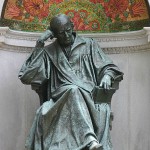
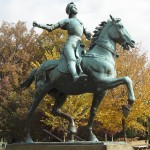


SonsL-Rront+Adolph,+Joseph,+Theodore,+and+Edward+.jpg)


















